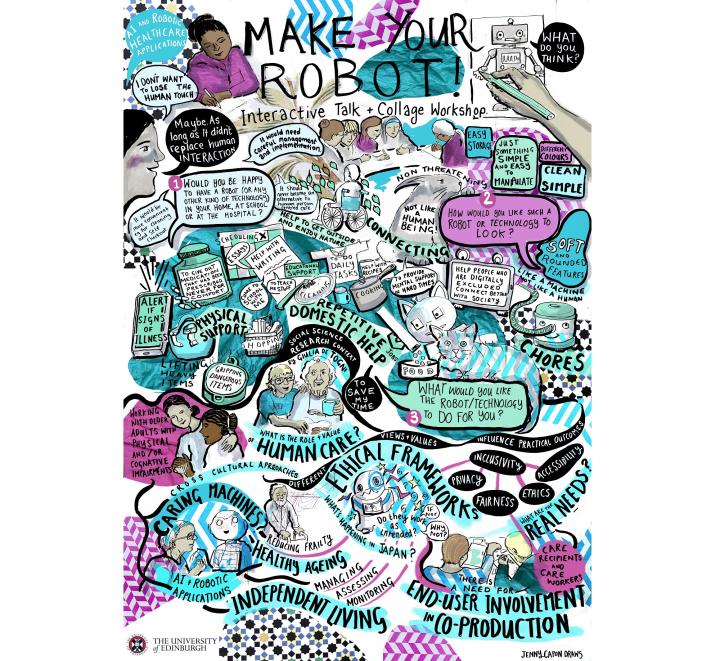Make Your Robot!
Make Your Robot! Public Engagement Event / Talk and Collage Making Workshop Part of the Festival of Social Science 2023 (UKRI/ESRC funding) Summerhall, Anatomy Lecture Theatre, Friday 27th October 2023, 6:00-7:30 pm
Over the past five years, my research at the Centre for Biomedicine, Self and Society has delved into AI and robotic healthcare applications, encompassing robot-assisted surgery, algorithms for diagnostic, exoskeletons for rehabilitation, and care robots. Employing qualitative interviews, focus groups, and observation sessions, I have engaged with a wide range of stakeholders, including robotics engineers, data scientists, AI experts, medical practitioners, care workers, and care recipients.
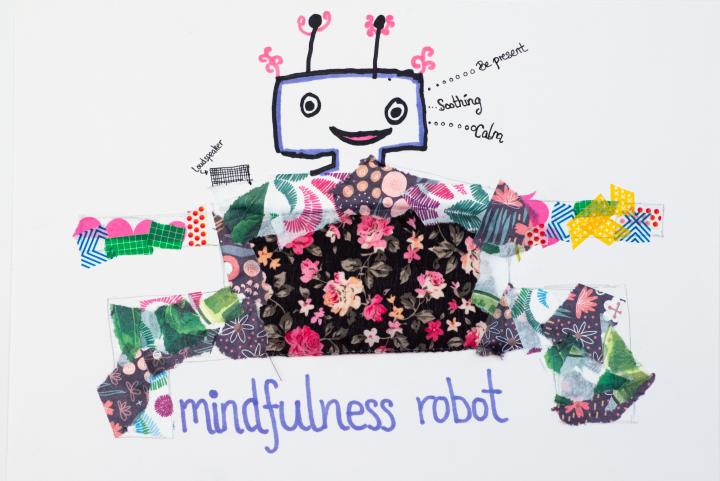
My ongoing Wellcome Fellowship, titled ‘Caring Machines,’ focuses on AI and robotic applications for healthy aging and independent living for people with disabilities. I study technologies that could be used for managing, assessing, monitoring, and reducing frailty among these populations. My fieldwork, spanning 14 months, has taken me to robotics laboratories and assisted living facilities in Japan and the UK. Through my comparative cross-cultural research, I have provided insights into how different ethical frameworks and perspectives on human care influence AI and robotic technologies in healthcare.
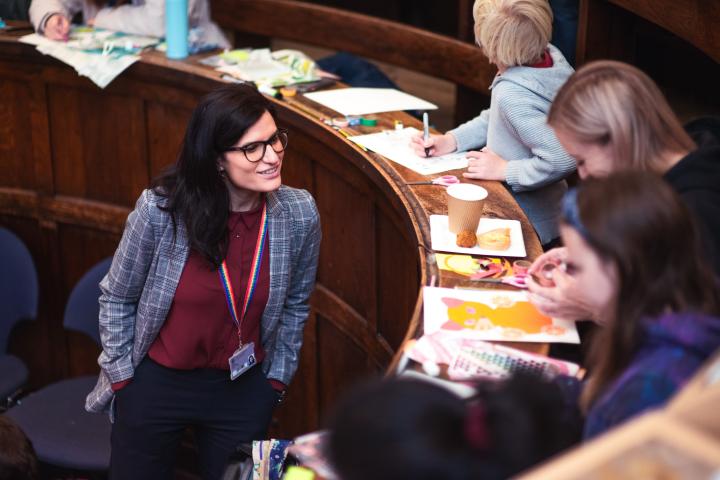
The technologies I have observed include robots for use in private homes, care facilities, and hospitals. These technologies encompass humanoid and pet-like social robots, telepresence robots, and mobile manipulators. I also observed examples of care robots for therapy and assisted living. While these technologies are often put forward as ‘solutions’ to the healthcare crisis, however, their effectiveness falls short in practice due to technical limitations and a lack of user involvement in their development.
During fieldwork, I noticed that these technologies are predominantly developed in labs without consulting potential end-users or considering the real needs of care workers and recipients. Moreover, ethical discussions surrounding privacy, inclusivity, accessibility, and fairness are also often inadequate if not inexistent. My collaborators at robotics labs have acknowledged these limitations and expressed willingness to involve potential users more in co-designing these technologies.
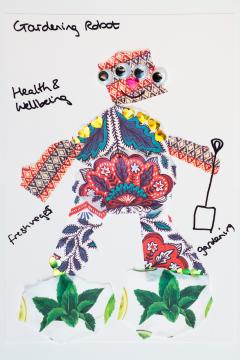
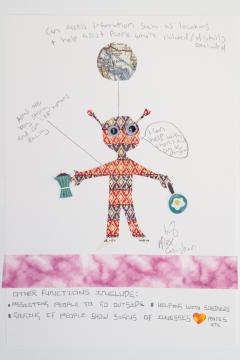
To initiate a conversation, I have started organising public engagement events like the one described here, where I invite members of the public to share their views on these technologies. One such event was the Talk and Collage Making Workshop “Make Your Robot!” which I organised as part of the Festival of Social Science 2023 after being granted UKRI/ESRC funding.
This event engaged with potential users of these technologies in Edinburgh, in particular older adults and people with disabilities and their families (including children). During the event, I asked participants: 1) Whether they would be happy to have a robot in their homes, schools or at the hospital; 2) How they would prefer the robot to look like; and 3) What tasks they would like the robot to perform for them.
Attendees were 10 members of the public with no background in robotics. Their responses to the first question varied, with overall positive attitudes towards using robots for medical assistance and household chores. One participant said: “[I would like to have robots] at the hospital, but to give out medicines that have been prescribed, not to give comfort.” Another remarked: “It depends, I don’t need it in my home, but I can see the merit to have one for schools and hospitals. However, it would still need for careful management and implementation and should never become an alternative to human person-centred care.”
In terms of how the robot should look like, participants suggested various appearances, from simple designs and machine-like to resembling cuddly animals. One participant stated: “[The robot should] probably look like a machine, not like a human being. And it should be soft rather than having lots of hard edges.” Another one said: “There could be several kinds of robots: One looking like a dog, one like a human, one could just be a plain hoovering robot (Roomba style).” Another participant remarked: “[Robots should be] just simple to use and easy to manipulate to be truly useful.”
Finally, in relation to the tasks the robot should perform, desired actions included assistance with studying for children, household chores, mental health support, and medical aid. One participant said: “I’d like robots to save my time by doing chores for me, including cleaning my house, cooking and other repetitive daily tasks.” Someone else said: “It would be cool to have a robot that not only helps me cook but also comes out with new recipes!”
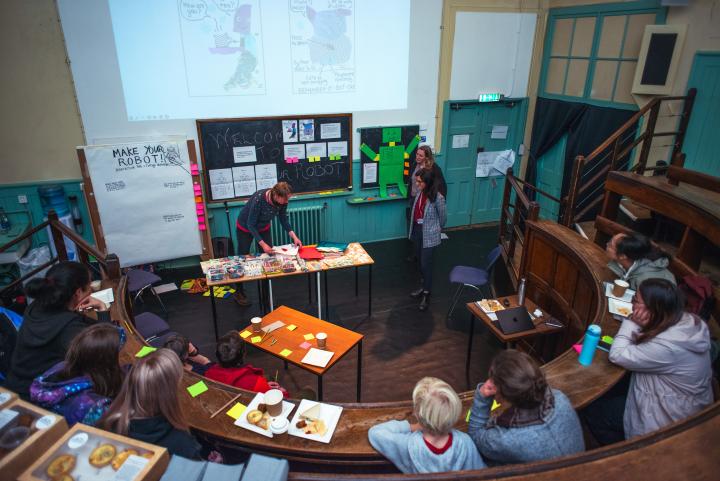
In relation to care robots, another participant, a wheelchair user, stated: “I want robots to help people who are digitally excluded to connect better with society. I want them to help me with lifting heavy objects. And to help people who are isolated to get outside more and enjoy nature as well as human interactions more.” A care giver at the event also remarked: “[Robots should help with] assisting frail people to go outside, helping them organise their schedules, alerting if they show signs of illness.” Someone else, despite recognising the potential of these technologies, concluded: “I don’t want to lose the human touch in healthcare due to robots.”
During the event, participants produced images of the robots they would like to use in the future, some of which are reproduced on this page. A visual artist, Jenny Capon, who is based in Edinburgh, produced a visual recording of the event, also reproduced on this page and which captures the discussion that took place during the event. Feedback was collected at the end for evaluation and all attendees expressed warm appreciation for what they thought were “really engaging” and “thought-provoking” activities. This small event has significant limitations due to its small number of participants; however, it nonetheless shows that there is public interest and enthusiasm for further engagement activities around responsible innovation for AI and robotic healthcare technologies.
Acknowledgements
I would like to thank UKRI/ESRC for the funding, Jenny Capon for the visual recording, Jenny Bos for the help with facilitating the event, and Grzegorz Biermanski for taking photos.
